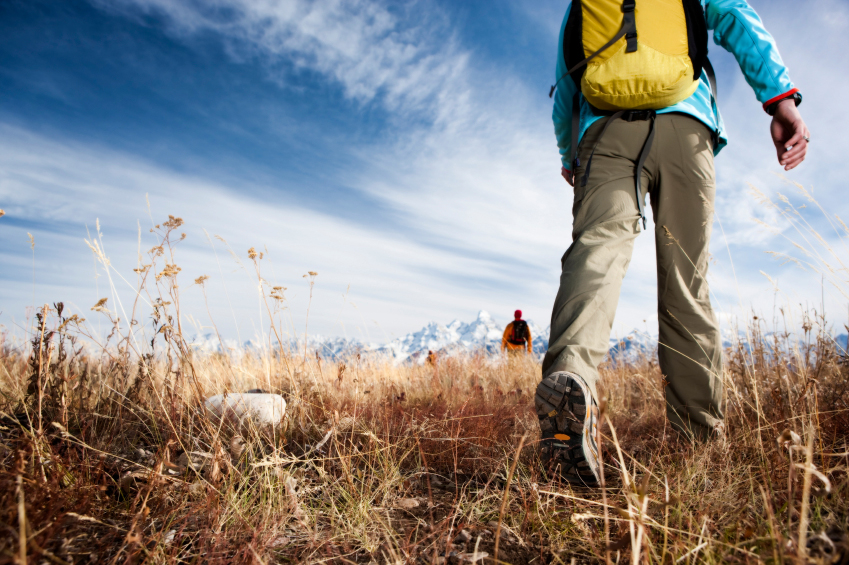This time of year is filled with sun drenched days and warming weather, combined with daylight lingering into the evening hours is known as the “golden” season of hiking! Before you trot off on the trail, ensure you have the proper knowledge and injury prevention tips necessary to enjoy the golden days ahead.
Hydration
Make sure you carry enough water for your entire trip. It is very important to stay hydrated and take water breaks as needed. Temperatures can fluctuate during the fall season therefore you want to make sure you are prepared for cool and warmer temperatures.
Dress
Dress appropriately. It’s colder now, so dress in layers and wear hiking boots. You may want a winter hat, synthetic undershirt and underwear, synthetic t-shirt, light-weight fleece hoodie, windbreaker, insulated jacket, light-weight gloves, thermal tights, hiking pants and rain pants. Make sure you pack extra socks (preferably wool and waterproof).
Weather
Check the latest weather and trail conditions. It’s not winter yet, but some trails may get slipper with the cold weather. Rangers at the local stations know the trails best, so give them a call before you head out. Fall weather can also turn treacherous or snowy on a dime, so check the National Weather Service’s Forecast before you head out.
Gear
Determining the distance of your hike will help you know what to pack ahead of time. Short hikes might only need you to bring water and light snacks. Longer hikes may include sunscreen, light sweater/warm clothes, knife, first aid kit, flashlight, extra food and water. REI has a list of 10 essential items you should bring on your next hike.
Trail
For those who are not experienced hikers, the following is a list of trail knowledge to take into consideration.
- Hiking Speed:The average hiker travels 3 mph; Add 30 minutes per 1000 feet of elevation gain or subtract 10 minutes/1000 feet of elevation loss. Be sure to build in “fatigue time” based on your fitness level and terrain.
- Estimated Return Time:Note starting time and calculate return time based on mileage. Along the trail and at the midpoint, reference the time to avoid pending storms or nightfall. Estimate remaining daylight by aligning extended hand, thumb up, at horizon and counting number of fingers between the earth and sun; each finger correlates to 15 minutes. Notifying family or friends regarding your travel plans including destination and return time increases chance of rescue should you become stranded or injured.
- Awareness of Surroundings:Pay attention when you hike; avoid wandering off the trail. Notice layout of the land. Stepping backwards, rounding a turn too rapidly or descending a steep embankment can result in injury should you lose your balance. Note major trail junctions and think about which way you turn. Every so often, and at all trail branches, stop and look backward which proves important when returning via the same route and is critical for backtracking to a known location if lost or disoriented. Referencing the map at major junctions helps commit the trail to memory.
We want to take care of you. If you are suffering from any aches and pains give us a call or schedule your free assessment today. https://apexnetworkpt.com/request-an-appointment/
Find a trail near you. https://www.alltrails.com/

